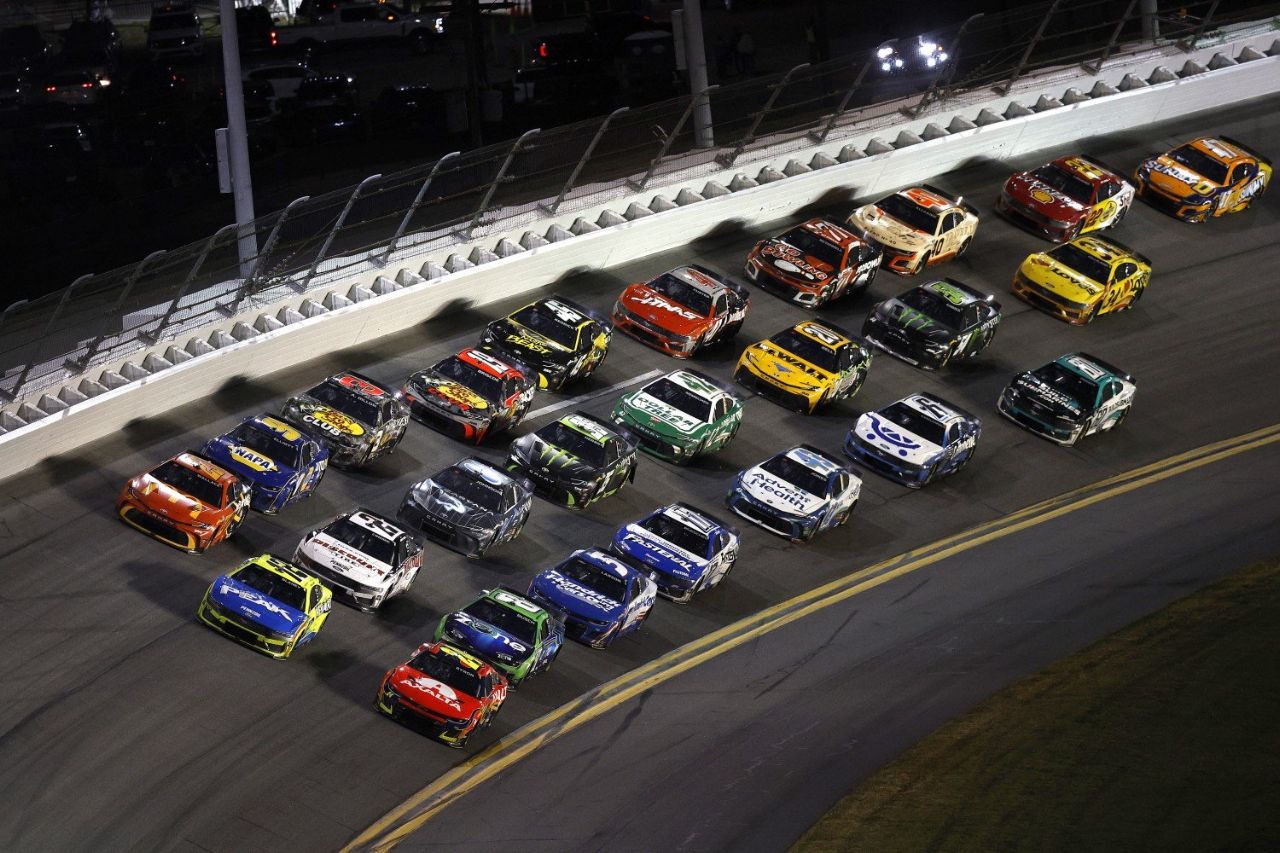The History of the Daytona 500: From Beach Racing to America’s Greatest Spectacle
The roar of engines, the acrid scent of burning rubber, and the cacophonous din of 200,000 fans, this is the Daytona 500.
Since the inaugural running of the “Great American Race” in 1959, motorsport’s greatest prize has evolved into so much more, a cultural phenomenon of raw speed, high-drama suspense, and Southern charm. But how did a humble coastal competition become NASCAR’s crown jewel? Its story is as wild and unpredictable as the race itself.
Birth of a Legend: Sand, Speed, and Stock Cars
Years before the Daytona International Speedway’s iconic tri-oval, racing took place on Daytona Beach’s hard-packed beaches. Around the early 1900s, daredevils like Sir Malcolm Campbell and hometown heroes Bill France Sr. pushed cars to their limits along the beach, seeking land-speed records.
The stock car racing on the beach road course started to draw audiences by the 1940s, but France envisioned more: a purpose-built superspeedway to stage an elite event.
In 1959, his vision became a reality. The Daytona International Speedway, a 2.5-mile engineering wonder, swung open its doors. The inaugural Daytona 500 was a photo finish so narrow that Lee Petty’s win wasn’t decided until three days later. That frenzied start defined the decades of nail-biting moments that followed.
The Rise of Icons and Rivalries
The 1960s and ’70s solidified Daytona’s reputation as a proving ground for legends. Richard Petty, “The King,” won his first of seven Daytona 500s in 1964, dominating the draft with his legendary blue #43.
David Pearson’s last-lap collision with Petty in 1976, a finish so sensational it’s indelibly etched in racing lore, demonstrated that Daytona repays daring as well as talent.
The 1980s witnessed the beginning of a new era of innovation and charm. Dale Earnhardt’s relentless tenacity earned him the nickname “The Intimidator,” but Daytona’s victory took him years to achieve. His tear-jerking near-misses, like running out of gas on the final lap in 1990, only made fans love the race all the more.
Modernization and International Recognition
As NASCAR increased in popularity during the 1990s, the Daytona 500 became a stage to showcase technological advancements. Restrictor plates, introduced after the devastating crash in 1987, reduced the speed but increased the noise of pack racing, creating the chaotic “Big One” multi-car crashes that are the hallmark of superspeedway drama.
The millennium era ushered in global icons like Dale Earnhardt Jr., Jeff Gordon, and Jimmie Johnson, who in 2006 became the first of two Daytona 500 victors. Unfortunately, Earnhardt Sr.’s deadly crash on the track during the 2001 race necessitated extensive safety precautions, such as the HANS device and SAFER barriers, rendering Daytona as much a symbol of modernity as tradition.
Daytona Today: A Festival of Speed and Culture
Now a 10-day spectacle known as “Speedweeks,” the Daytona 500 is the anchor of a celebration that includes exciting concerts, vintage car shows, and the high-octane Busch Light Clash. The actual race remains a proving ground: rookies like Trevor Bayne (2011) have stunned grizzled veterans, while grizzled veterans like Denny Hamlin (2016, 2019, 2020) seek immortality.
Daytona Beach, once a peaceful coastal town, is today a racing haven. Visitors can experience a vibrant list of locations, from the Motorsports Hall of Fame to the sun-drenched beaches of the Atlantic and even casinos in Florida.
Why the Daytona 500 Endures
Why is it immortal? It’s the uncertainty. Weather, strategy, and a little luck are as important as horsepower. The 2020 race, delayed by a lightning storm and won in darkness, was the ultimate example of its volatile temperament. It’s also the stories: underdog victories, dynasty-building, and heartbreaks that go beyond the track.
Most of all, the Daytona 500 is a paean to Americana, a union of engineering brilliance, Southern hospitality, and the unremitting quest for triumph. When drivers get the green each February, they are not racing for a trophy; they are chasing history.
The Checkered Flag Waves On
From its desert origins to being a $20-million-plus purse event, the Daytona 500 has traced NASCAR’s path. But at its core, it remains the same: a study of audacity, craftsmanship, and perseverance. To fans, it’s not merely a race, it’s the first book of the NASCAR season, a shared ritual in which legends are born and memories created on the pavement.
As the engines rev up each year, one thing is always certain: In Daytona, anything can occur. And that’s why the world keeps on watching.
